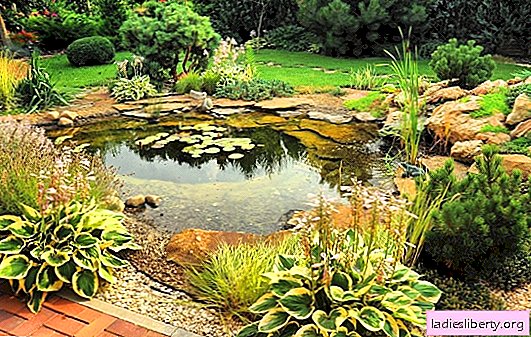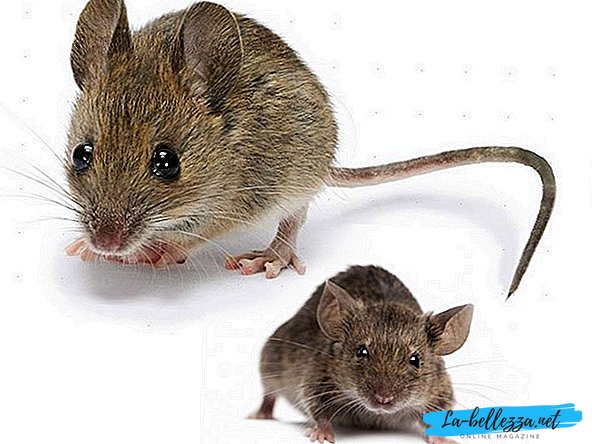
Since ancient times, people preferred to engage in agriculture and farming, having a river or lake nearby. A pond is essentially a small, closed ecosystem, so the desire to build such an object on your site cannot be considered a whim.
The pond will be beneficial for many years: it will establish a microclimate in the nearest territory, attract birds that can kill pests, and make temperature changes milder. The principle by which all artificial ponds are built is quite simple and somewhat similar to creating a sculpture: you need to get rid of all the excess on the site.
Pond location
The place under the pond, as a rule, is selected taking into account the size of the site, its shape and landscape of free space. The main rule: for a pond, a shady place with fairly solid soil is most suitable. It is also very important that there are no tall trees near: the fact is that their roots can harm the walls of the reservoir, and the falling leaves will add care for cleaning the pond. Various shrubs, flowers and perennial grasses are ideal for his environment.
If the site is lowland and the groundwater level exceeds normal, a drainage system is required. It will divert excess fluid outside the territory and regulate soil moisture.
Conventionally, experts divide artificial reservoirs into small, medium and large. Their size varies from 5 to several hundred square meters. meters, and the depth is from 0.3 to 2 meters. Ideal proportions in relation to the size of the site itself - 10-15%.
Varieties of ponds
The popularity that homemade ponds have gained today is due to the appearance of readily available and at the same time high-tech materials. In the construction of artificial aquatic ecosystems, three proven methods are used, which include:
• finished rigid forms (plastic, polyethylene, fiberglass, polypropylene);
• concreting the bowl of the future reservoir;
• waterproofing film.
The most popular are finished forms, the size, price and service life of which directly depend on the material. The most durable are bowls made of polypropylene or fiberglass: they can last a very long time, since repairs are possible.
Creation of a reservoir
After choosing a place and material for the walls of the pond, you can proceed to the immediate arrangement of the object.
Requiring only a little patience and concentration, the installation of a finished plastic mold is not very difficult to implement. First of all, a bowl is placed on the place chosen for the reservoir, turned upside down, and circled around the perimeter. After that, pegs are placed at a small distance from the circled contour: this will be the boundary of the future reservoir. Then you need to dig the pit itself, and its bottom and walls are cleaned of debris, roots and stones and properly rammed. In addition, the depth of the pit should take into account 20 cm for the sand layer and completely repeat the bends of the bottom of the bowl. After this procedure, the bowl is immersed in a dug pit and, having checked the strict horizontal position of the mold, as the sand is poured under its bottom, fill the pond with water. Next comes the final stage of the decorative design of the reservoir.
If when creating a pond with an area of 20 to 25 square meters. m using a waterproofing film, it is somewhat similar to a frame transportable pool. The main difference is the presence of the walls of the pit instead of the frame.
The “film” method uses several layers of elastic material made of vinyl, polyester or rubber made of rubber, which has high frost resistance and is therefore more durable. The pit with this method has its own specifics: it must have ledges (width and depth up to 40 centimeters) for subsequent decorative design, and the walls should be made flat enough so that sand (a sand layer is also needed here) does not pour to the bottom. A layer of geotextile is laid on a sand cushion, and then the main film is laid. So that the air does not form a bulge at the bottom of the reservoir, you can slightly raise the film and let it come out. The edges of the film are pressed tightly by the stones so that the bottom straightens out and, with a gradual pouring of water, lies exactly in the shape of a foundation pit.
Ponds using a concrete bowl require the preparation of a whole project and, as a rule, are created simultaneously with the house and other outbuildings. Such reservoirs have impressive dimensions (several hundred square meters) and are used for various purposes: bathing, raising fish and even boat trips. The construction of such an object requires large-scale landscape work, and it may take up to 2 years to establish a natural ecosystem.
The design itself is a foundation (frame) using bottom reinforcement and a concrete bowl with hollow plastic cassettes inside for extra strength and insulation. The concrete pouring scheme is as follows: first of all, the first layer is poured onto the protective film, then the reinforcement is pressed into it, and then the second layer is poured. If desired, it is possible to veneer concrete with glass if fish breeding is planned in the pond.
Thus, the reservoir is an excellent solution not only for decoration, but also for creating a harmonious ecosystem that regulates the microclimate of the entire site. However, it must be remembered that the pond requires constant care and even repairs from time to time.











